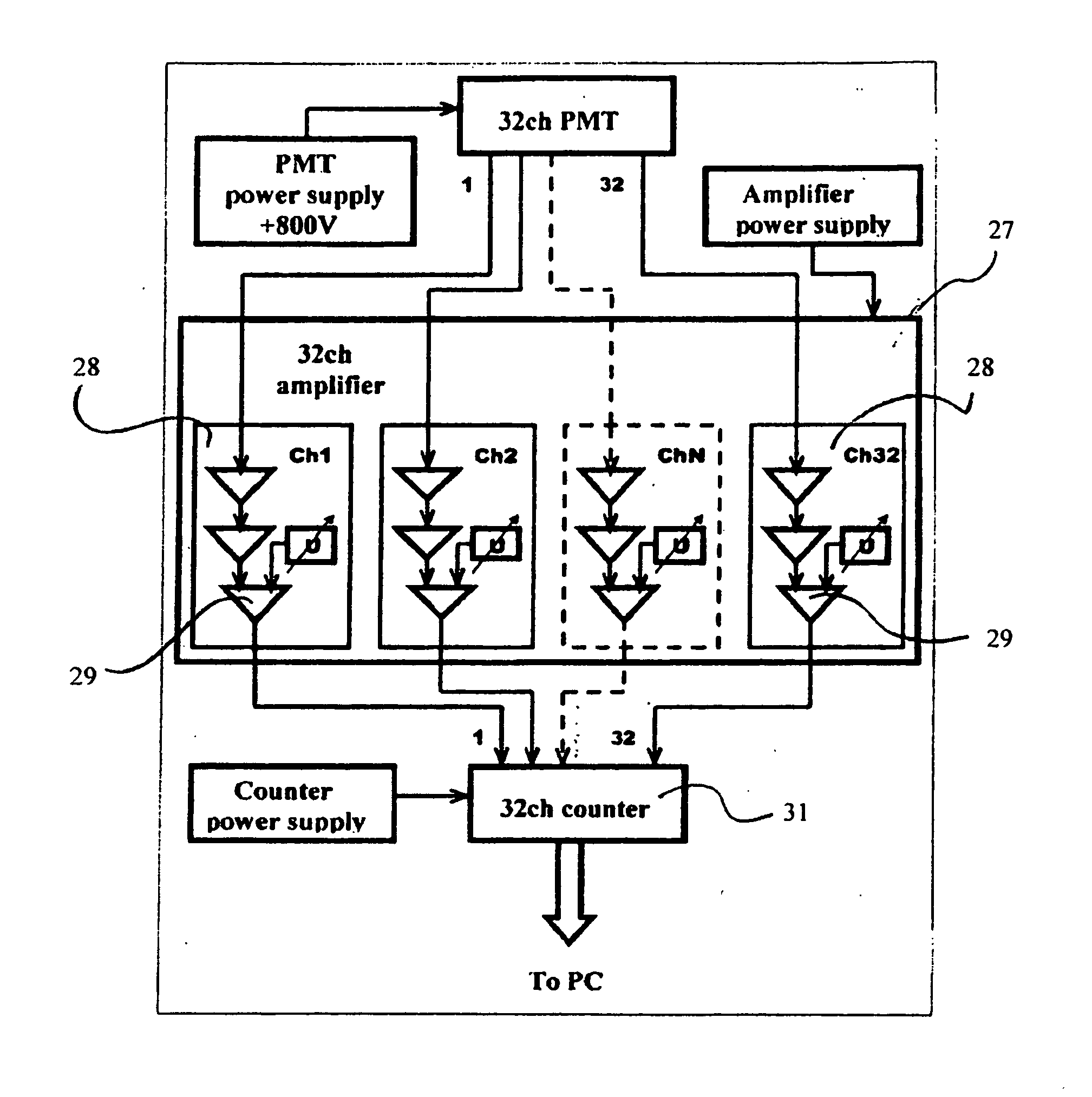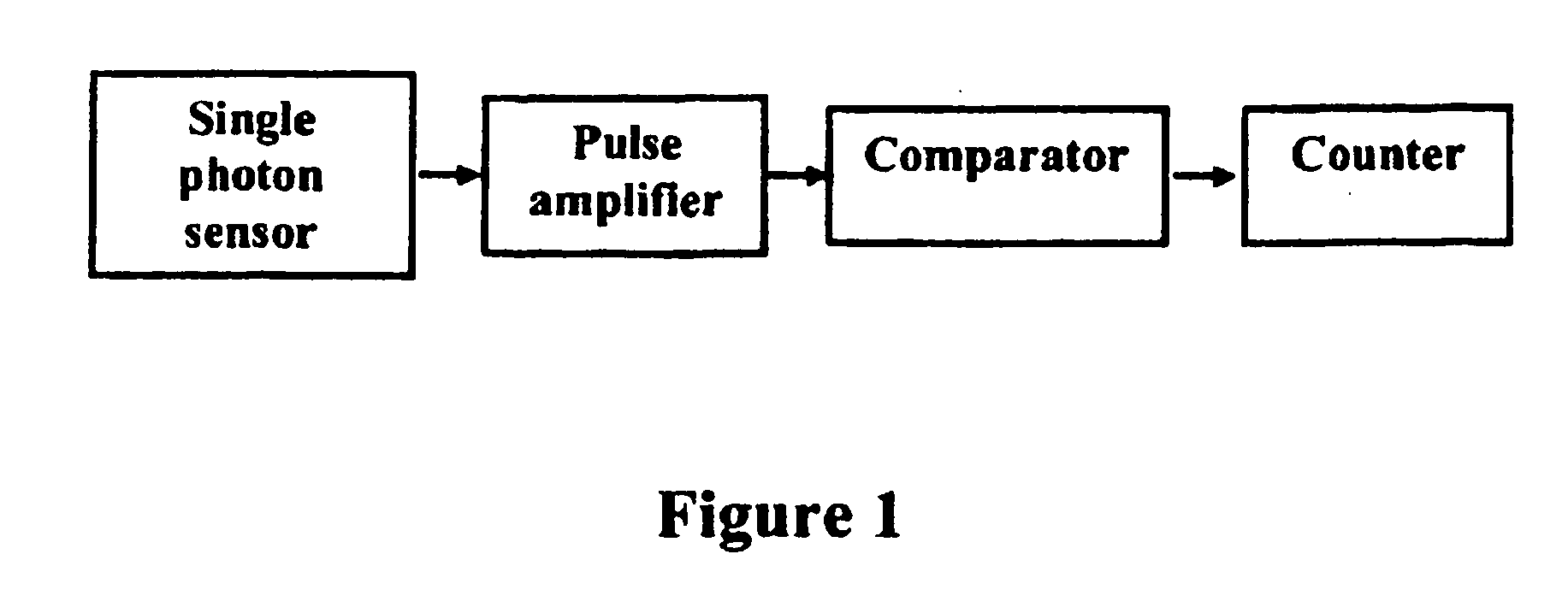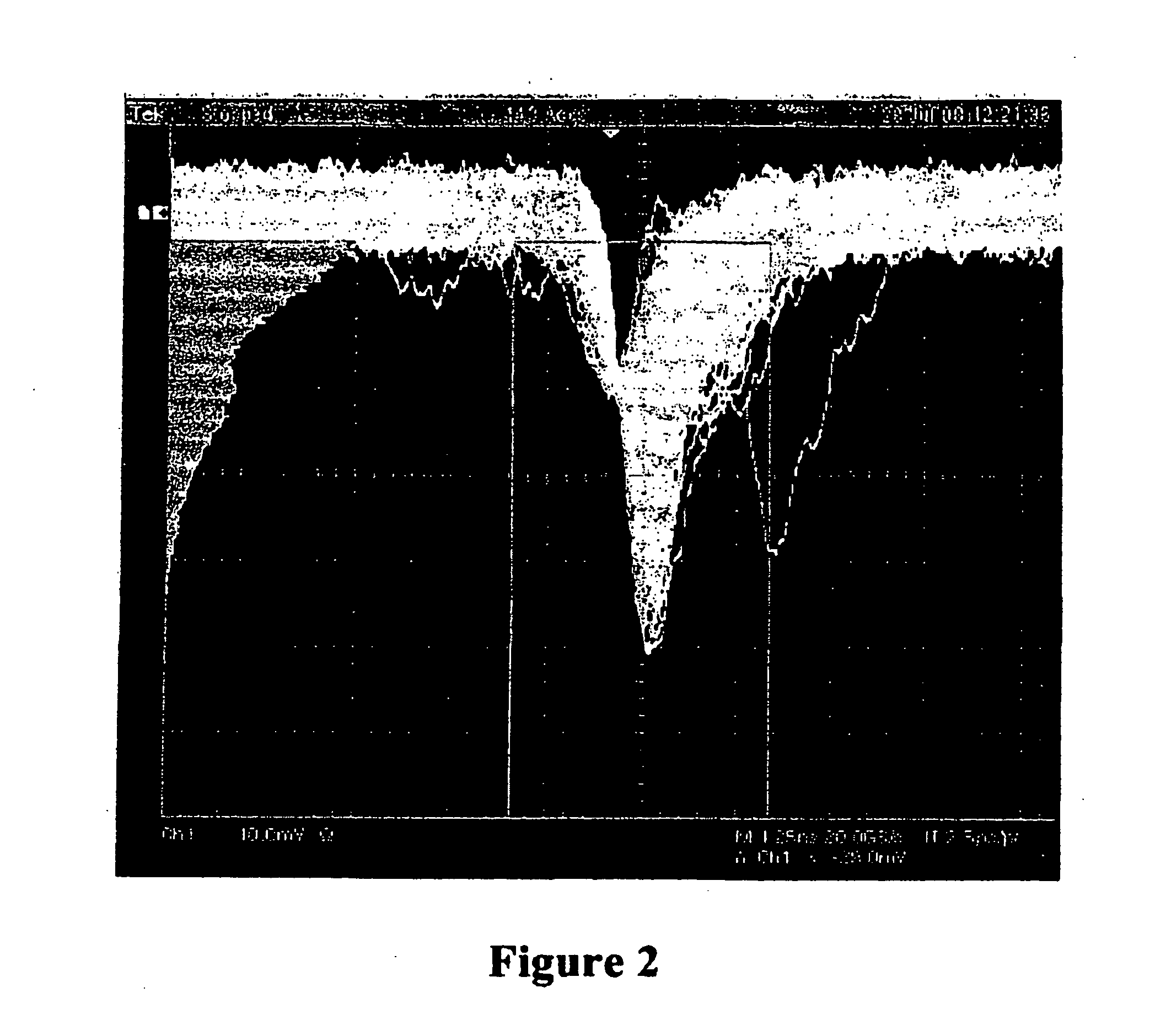Single photon spectrometer
a single photon and spectrometer technology, applied in the field of single photon sensor systems, can solve the problems of limiting the performance of single photon detectors, narrow linearity dynamic range of available photon counting devices, and conventional single photon pmt detectors, etc., to achieve accurate and high-speed detection, wide detection dynamic range, and high sensitive
- Summary
- Abstract
- Description
- Claims
- Application Information
AI Technical Summary
Benefits of technology
Problems solved by technology
Method used
Image
Examples
Embodiment Construction
[0055]With reference to FIG. 3, there is shown a block diagram of a sensor 10 having single photon sensitivity for measuring radiation emitted by mixtures of minute amounts of multiple fluorescence dyes. An optical input fiber II collects polychromatic fluorescence which is then passed through a spectral separation module 12, schematically illustrated in FIG. 4. After passing through the module 12, the decomposed fluorescent signal illuminates photosensitive pixels of a 32-channel photo-sensor 13, which may be, by way of example only, the 32-channel PMT array H7260-20, which is manufactured by Hamamatsu, Corporation of Japan. Each of the separated wavelengths is detected by one channel of the PMT and each channel of the PMT is capable of detecting wavelengths in the range of about 10 nm. The received photons produce very short current pulses which undergo amplification and photon counting. For example, as shown in FIG. 7, when the PMT is working in a single photon counting mode each...
PUM
 Login to View More
Login to View More Abstract
Description
Claims
Application Information
 Login to View More
Login to View More - R&D
- Intellectual Property
- Life Sciences
- Materials
- Tech Scout
- Unparalleled Data Quality
- Higher Quality Content
- 60% Fewer Hallucinations
Browse by: Latest US Patents, China's latest patents, Technical Efficacy Thesaurus, Application Domain, Technology Topic, Popular Technical Reports.
© 2025 PatSnap. All rights reserved.Legal|Privacy policy|Modern Slavery Act Transparency Statement|Sitemap|About US| Contact US: help@patsnap.com



